By Rick VanSickle
When Ed Madronich made his first sparkling wine at Flat Rock Cellars his mother had a small request — make five cases with cork closures rather than the crown cap that was planned for the rest of the production.
Madronich, president of Flat Rock Cellars, had fought hard to even get VQA to change the rules to allow crown caps on sparkling wines, but “for my mom” he used cork on those five cases of the 2006 Sparkling Brut (now called Riddled) and they were the first (and last wines) that ever saw cork at his winery. He didn’t know then that 13 years later Nadja Madronich’s (and, yes she has a vineyard named after her) insistence on the traditional cork and wire enclosure would prove to be an important experiment for the crown cap and Stelvin-only production at Flat Rock.
It’s not even a thing anymore. If you buy a bottle of wine at Flat Rock Cellars in Niagara, it comes without a cork. Always has and always will.
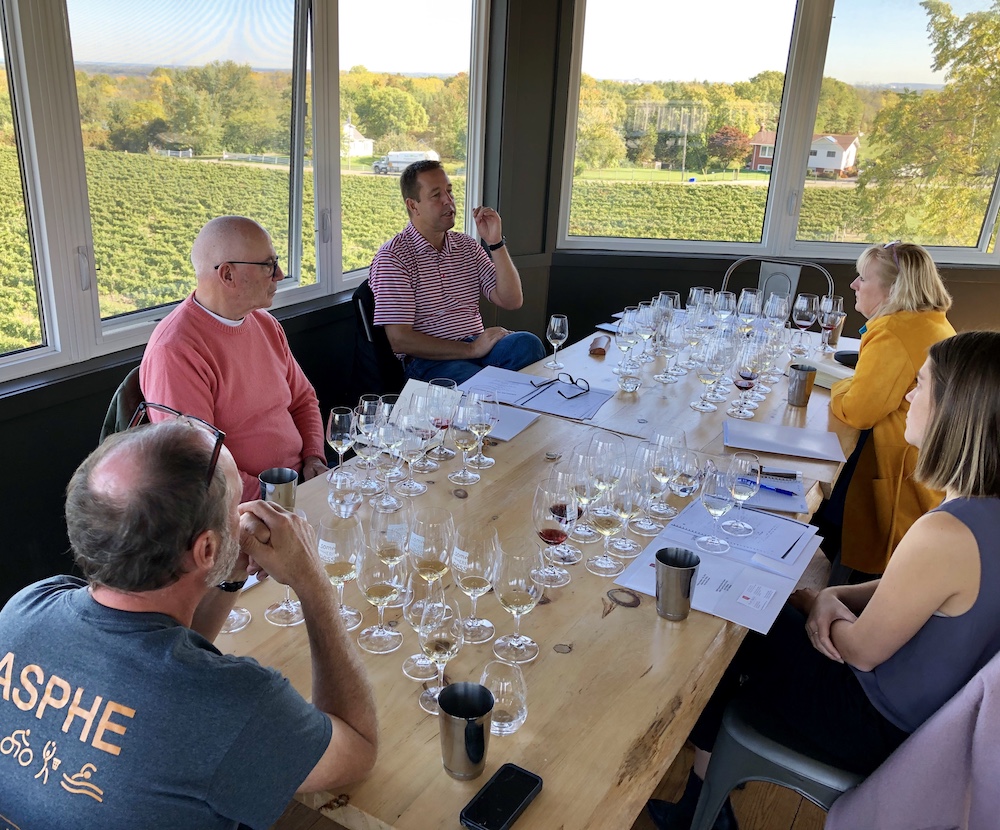
It’s pretty simple, really. Madronich wants zero chance of cork taint in any of his wines so, since the first bottle rolled off the bottling line in the early 2000s, every single one of them has been closed with either Stelvin or a crown cap (on sparkling wines).
It wasn’t always easy back in the early days of Stelvin, but Madronich was willing to put the work into educating consumers every step of the way even as he encountered resistance from both consumers and critics. He was a believer and would rather not ruin a bottle wine with cork taint just to fuel the notion that cork is somehow romantic.
He’s been told that time and time again:
“I’ve heard, hey, Ed, but it’s a little more romantic to open that bottle of wine with a cork in it,” Madronich has famously said (see video below). “My only response to that is, if that’s the best you can do for romance, you’ve got bigger problems than just opening up a bottle of wine.”
Simply stated, Madronich has always insisted on Stelvin (screwcaps, even with his icewines, which Flat Rock was the first to do) and crown enclosures to avoid TCA (cork taint in his wines) and, of course, oxidization.
We would never have had a reference for Madronich’s early vision if his mother’s insistence on the more traditional sparkling wine in cork wasn’t followed through. Her dutiful son did make those five cases and here we are in the glass-encased, hexagonal Flat Rock tasting room with breathtaking views across Lake Ontario to Toronto and two glasses of 2006 Riddled in front of us — one finished in cork and the other crown cap.
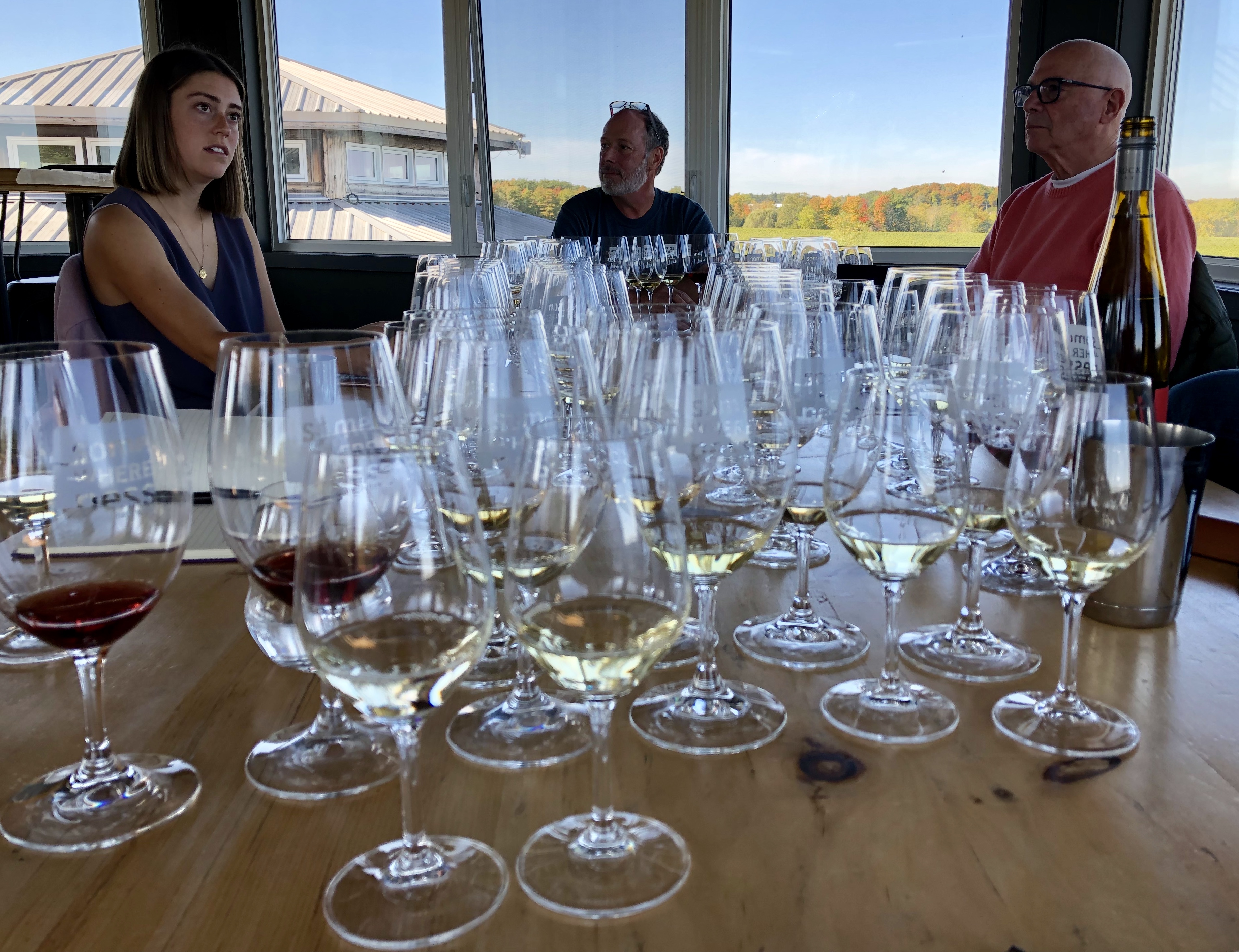
We are a curious lot; Madronich and winemaker David Sheppard confidently holding court with wine writer Tony Aspler, Belinda Kemp, senior scientist in Oenology at Brock’s Cool Climate Oenology and Viticulture Institute (CCOVI) and Brock researcher Hannah Charnock in attendance.
The first thing Madronich asks as the two wines are poured side by side, is can we guess which is the sparkling wine in cork and which is not? Because we are pretty sure where this experiment is going, to a person we pick the glass with the deeper golden colour, suggesting more interaction with oxygen. Already Madronich is proving his point.
He tells us the two wines, the first sparkling wines crafted at the winery, were made exactly the same — the same blend of 73% Pinot Noir and 23% Chardonnay, hand sorted and gently whole bunch pressed, cold fermented for two weeks, fermenting wine transferred by gravity flow to older French oak barrels, and lees stirring following full fermentation. Once bottled, the wine was left for two and half years to age before disgorging and the dosage added. It was released to consumers in January 2010.
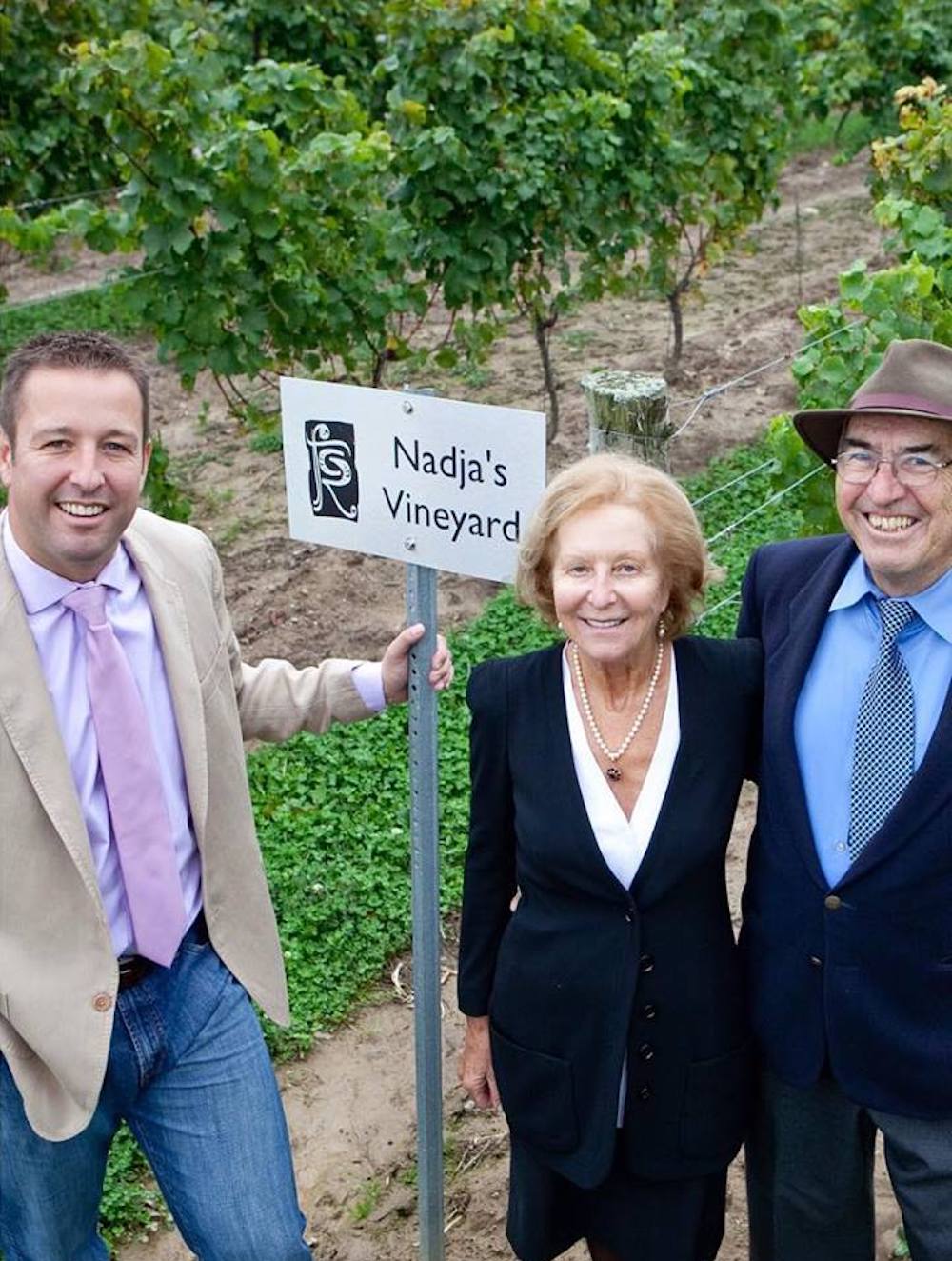
The cork finished Riddled was noticeably oxidized, had almost no active bubbles with baked apple, mellow lemon/citrus and muted acidity and lack of finesse.
The crown cap Riddled was quite delightful with an elegant mousse, toasty brioche notes and baked apple, lemon and still some vibrancy on the finish. It was a deliciously mature bubble that would still be nice to have available in the cellar.
There are a lot of pros and cons for both closures available on the internet from countless studies about the subject, yet nothing is conclusive. What we do know, and the motivation behind why Flat Rock is 100% cork-free is simple: There is zero chance of cork taint with a crown or screw cap. Romance aside, that’s good enough for Madronich.
We were also treated to some comparisons between older vintages and new vintages of some of Flat Rock’s signature wines to see how they hold up under Stelvin.
Here’s what we tried:
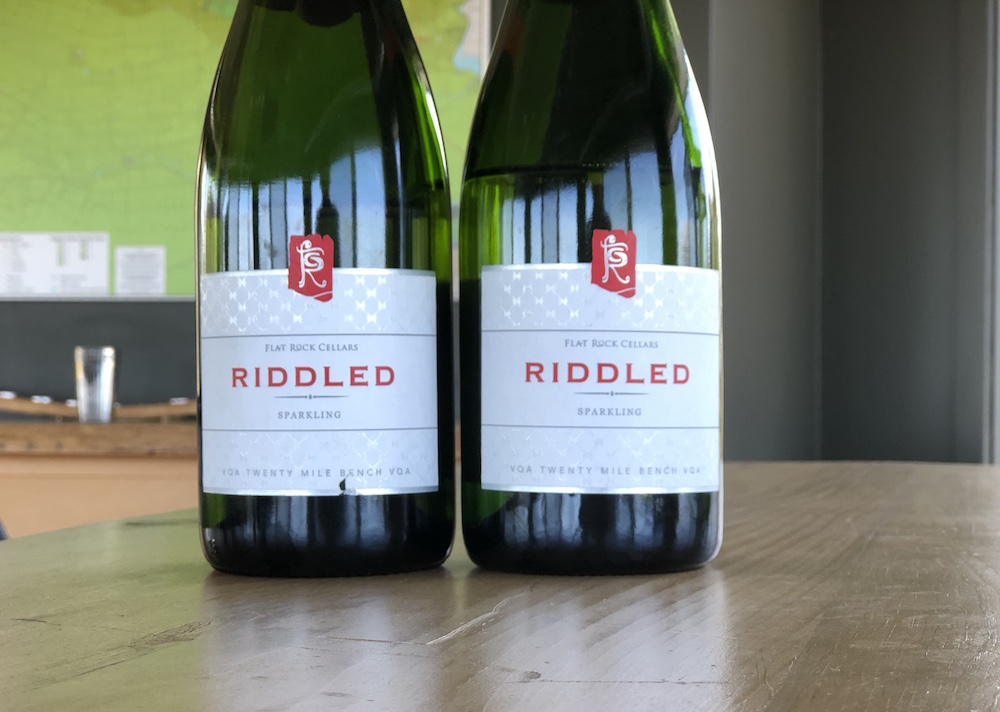
Flat Rock Cellars Riddled 2017 — The 2017 vintage of Riddled is a blend of 61% Pinot Noir and the rest Chardonnay. The fruit was whole cluster pressed, fermented and aged in neutral oak barrels prior to 18 months of bottle fermentation. Such lovely brioche, lemon curds, citrus and freshess on the nose with a vigorous mousse. It’s beautiful on the palate with energy, finesse and bursting with citrus and green apple notes with underlying biscuit/brioche notes.
Flat Rock Cellars Riddled 2010 — This was a heavily awarded sparkling at the time, earning a platinum medal from Decanter Magazine. It’s still lovely but with a little less vigorous bubble and finesse. There are attractive notes of mature pear, apple and citrus with depth of flavour on the palate and subtle nuances that sing through the finish. It’s rich and seductive, but less racy than its younger self.
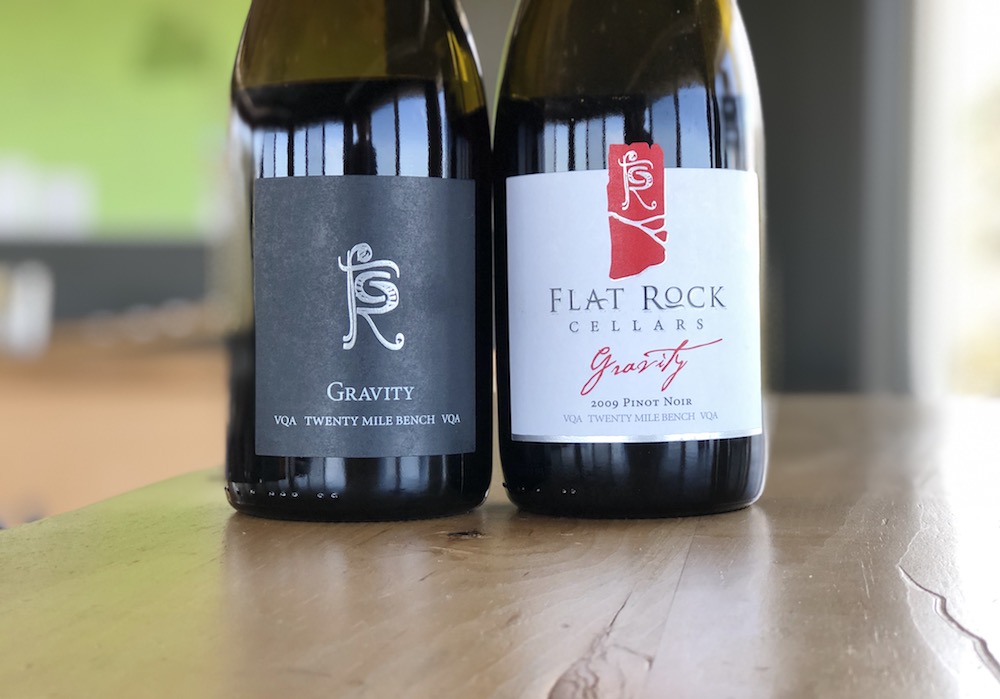
Flat Rock Cellars Gravity Pinot Noir 2016 — This is the second tasting I’ve had of this gorgeous Pinot after a sneak peek with Sheppard before it was released. It shows a beautiful nose of rich black cherry, cassis, fine oak spice and earthy/savoury notes that show off the minerality and terroir of the estate Pinot vineyards. There is tannic structure on the palate, but still rather smooth, with bold red fruits, cassis, spice and driving acidity. It’s beginning to come into harmony.
Flat Rock Cellars Gravity Pinot Noir 2009 — Critics raved about this vintage for Pinot Noir in Ontario, an otherwise bright spot in a very cool year in Niagara. Back when they were released Suresh Doss and I organized a big tasting of all things Pinot Noir in Ontario, which you can read here (https://winesinniagara.com/2012/01/the-beauty-grace-and-power-of-ontarios-2009-pinot-noirs/). We were all suitably impressed with the wines we tasted that day. My original notes described this wine as having a seductive nose of cherries, plums, earth, cloves and other oak-influenced spices. On the palate it explodes with black cherry-raspberry, currants and sweet plums to go with fine tannins, minerality, toasty spices, and layers of complexity through the finish. Drink now or hold up to five years. 10 years later, the fruits have turned a bit darker and there is a reductive/earthy note taking over — not necessarily a bad thing, in fact, Kemp said she doesn’t mind a big of reductiveness in her wines. It certainly adds funk and gives the wine an earthier feel. However, I think my note of cellaring five years was probably about right for optimum drinking.
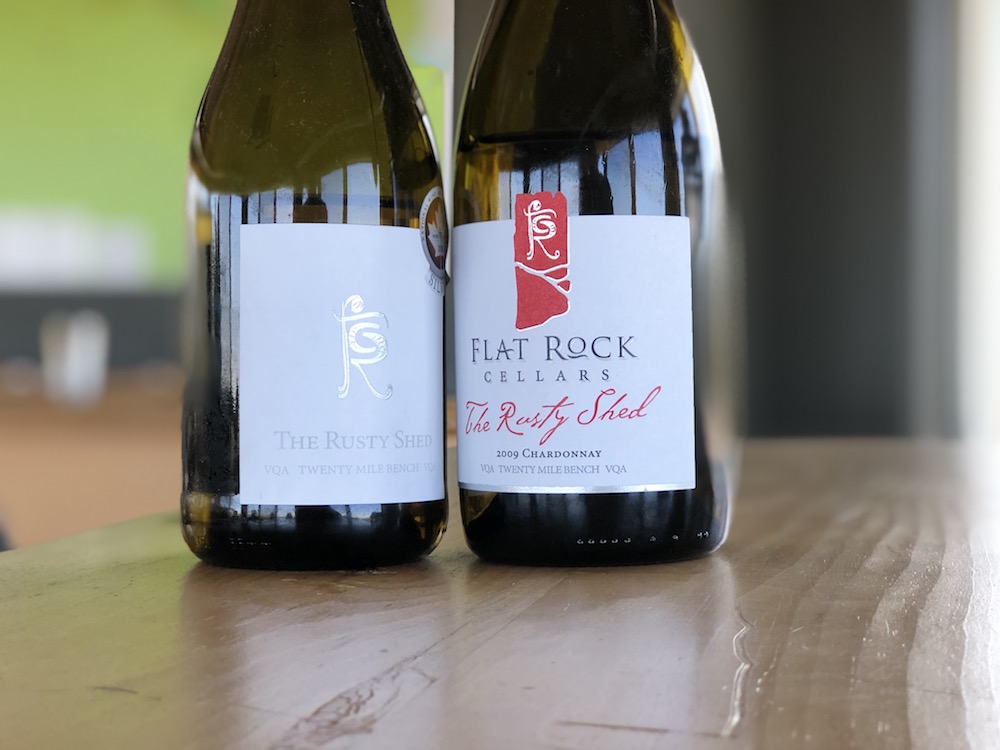
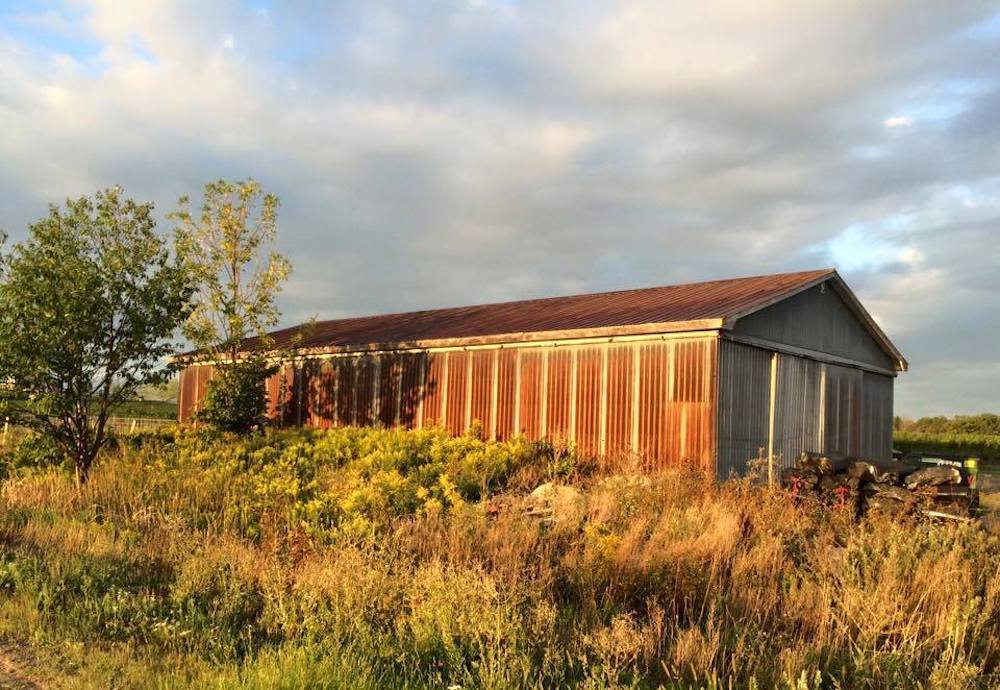
Flat Rock Cellars Rusty Shed 2017 Chardonnay — There is a shed that sits in the middle of the Flat Rock vineyard, above, that the Madronich family inherited when they purchased the property in 1999. As it aged it was starting to rust and Ed Madronich Sr., founder of the winery, kept bugging his son Ed Jr. to paint the shed. Ed Jr. instead came up with a clever marketing plan to name a wine after what would become the Rusty Shed Chardonnay. Once the labels were printed and first bottles presented to dad, it was too late to paint the shed. Mission accomplished. The 2017 vintage has a nose of creamy pear, green apple, lemon/citrus accents and elegant spice notes. On the palate, it has flesh on the bones and full flavours of apple pie, poached pear, flinty minerality and baking spices with texture and a vibrant finish.
Flat Rock Cellars Rusty Shed Chardonnay 2009 — This has aged well and is still going strong. Such a beautiful nose of ripe pear, rich apples and spice with an interesting hint of reduction. It’s very much alive on the palate, obviously maturing, but loaded with orchard fruits, caressing spices and vibrancy on the finish.
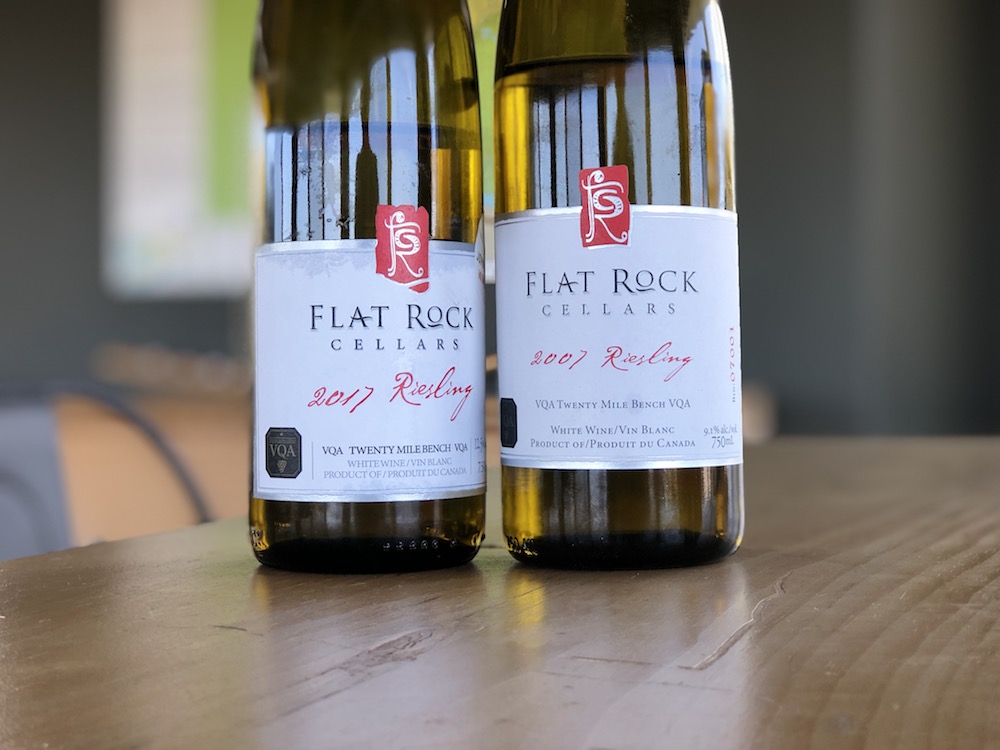
Flat Rock Cellars Estate Riesling 2017 — The 2017 entry level Riesling, made from estate grapes, costs $18 and is always a fantastic value. Such a lime bomb on the nose with citrus, green apple, grapefruit and honey comb. It has wonderful balance between sweet and tart fruit on the palate with bright acidity on the finish.
Flat Rock Cellars Estate Riesling 2007 — This was made with about twice as much residual sugar as the 2017 (30 g/l compared to 14 g/l) and is perfect example of how well Niagara Rieslings age. There is just a hint of that lovely petrol note on the nose to go with lime, grapefruit, a whiff of peach and apple. The petrol dissipates on the palate and waxy/lanolin notes emerge to go with citrus and orchard fruits leading to long, balanced finish. Lovely aged Riesling.
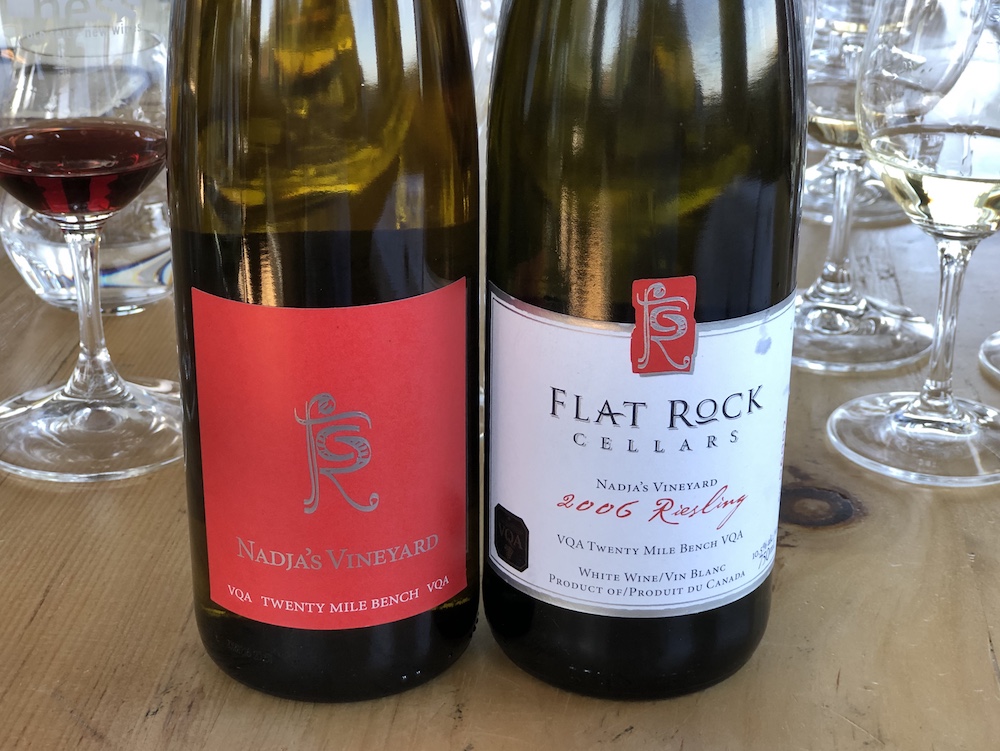
Flat Rock Cellars Nadja’s Vineyard Riesling 2018 — This is one of Niagara’s benchmark single-vineyard Rieslings and it rarely disappoints. The 2018 vintage shows a racy vein of stony minerality with lime, grapefruit, lemon pith and apple skin on the nose. The firm acidity on the palate highlights a range of citrus, green apple and mineral notes that are all crisp, dry and vibrant through the finish.
Flat Rock Cellars Nadja’s Vineyard 2006 — On the nose, this is a wonderfully aged Riesling with citrus rind, river-rock minerality and saline. Showing a bit of its age on the palate and it might be time to drink up, but still interesting citrus and minerals through a lively finish.

Note: It was at this tasting while enjoying Flat Rock’s Rieslings that the idea of a Niagara celebration of all things Riesling came up in conversation. There was interest in getting something started as early as this fall. See story here for more details.







Comment here